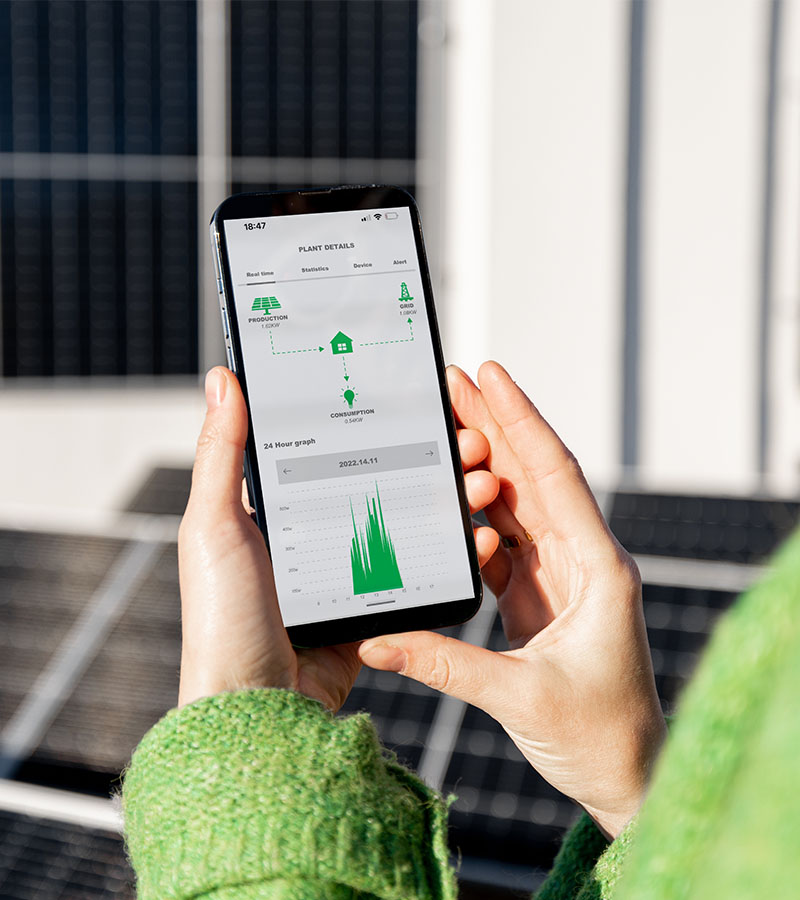Energy Monitoring
Electricity; There is no doubt we need it to run our homes, businesses and public buildings. As one of our largest utility bills you can utilise a powerful tool to provide insight into your usage which could help you to analyse and create savings monthly. This solution is the installation of an Energy monitoring kit – A specialist system to give you precise real time readings across your building.
What are Energy Monitors?
Have you ever noticed that your electric bill is often lacking in detail? Typically, it only shows your total electricity consumption and cost, leaving you in the dark about specifics. An energy monitor is designed to track the electricity consumption in your home in real-time. It doesn’t cover gas usage, only electricity. Typically, it presents this data, often in kilowatt-hours (kWh), on a digital display. By connecting to your electricity meter, they show your home’s energy consumption and offer insights on enhancing efficiency.
How do Energy Monitors work?
Usually, energy monitors are placed near your electrical panel, also known as the breaker box. If you have a smart panel, it will already have monitoring features built-in, offering insights into energy usage at the circuit level. On the other hand, if you’re using an add-on energy monitor, it typically comes with sensors. These sensors can attach to the wires connecting your electric meter and electrical panel, to measure the electrical current in your home.
What are the different types of Energy Monitors?
Handheld monitors: Equipped with a sensor and a digital display unit, these monitors allow you to attach the sensor to your electricity meter’s power cable. They detect your electricity usage and wirelessly transmit the data to the handheld display unit for convenient viewing.
Online monitors: Similar to handheld monitors, online monitors function by connecting a sensor to your electricity meter. However, instead of a handheld display unit, you access the information through your own device, such as a tablet or smartphone, by logging into a dedicated interface.
Plug-in monitors: These monitors are directly plugged into the wall and measure the energy consumption of individual appliances. Additionally, there are multi-socket monitors available, allowing you to plug in several appliances for simultaneous monitoring.


Home Energy Monitoring
Home Energy monitors offer insights beyond just total electricity consumption, often delving into device or circuit-level details. Ultimately, the main aim of investing in an energy monitor is usually to reduce electricity usage and, consequently, save money. For instance, Sense, a home energy monitor company, suggests that their average user saves around 9% on electric bills.
Monitoring and Verification
Energy monitoring plays a crucial role in public sector funded projects. For example, Salix Finance expect all applicants of their funding schemes to complete post-project monitoring activities such as the verification of savings, for three years post-installation. They provide detailed examples of the supporting information and data that they require from public sector bodies.
What Should you Consider when buying an Energy Monitor?
Energy monitors vary widely in features and pricing, so you should compare multiple models before making a purchase. Some of the key convenient features and advantages of energy monitors include:
- Real-time display of current energy consumption
- Wireless connectivity and portability, allowing you to move the display around your home
- Access to historical data, including daily, weekly, and monthly usage trends
The cost of an energy monitor will depend on your individual needs and circumstances. However, it’s important to note that in many cases, the potential savings from reducing energy usage after purchasing an energy monitor can offset the initial investment.
What is Mantis Energy’s role in energy monitoring?
At Mantis Energy, we offer installation of monitoring equipment on commercial and domestic properties. We can also offer guidance on how to use the dashboard and interpret the data collection, as well as offering peak load energy monitoring to see when peak times are and how much the demand can be at these times.
For monitoring and verification on Public Sector Decarbonisation Scheme projects, we can install our equipment and review the data, to provide evidence of improvements to Salix following completion of the funded work.
